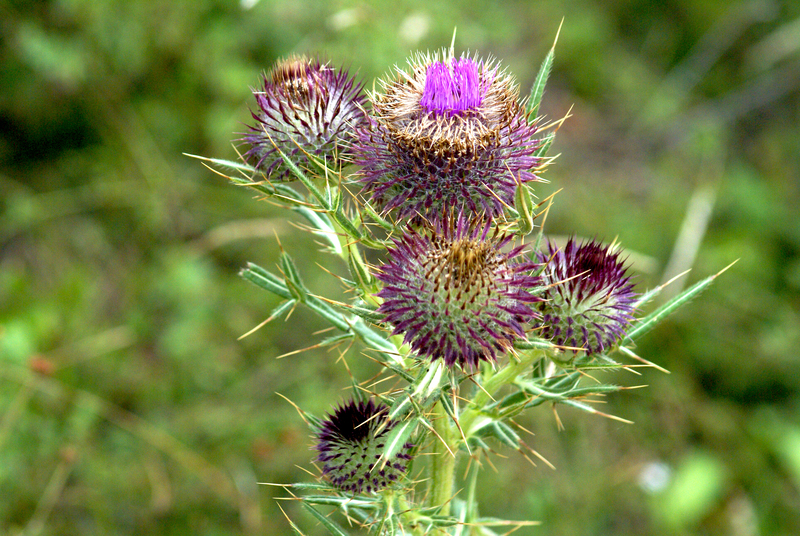Transform Your Yard with These Essential Lawn Care Tips for Starters
Are you dreaming of a vibrant, green oasis right outside your window but not sure where to begin? Proper lawn care is the secret to a healthy, attractive yard that enhances your home's curb appeal and serves as a welcoming space for family and friends. In this comprehensive guide, we'll break down the most essential lawn care tips for starters, helping you go from a patchy, dull yard to a lush, enviable landscape. It doesn't matter if you're a beginner or have a bit of experience--these tips will set the foundation for long-lasting results.
Why Lawn Care Matters for Beginners
Lawn care isn't just about good looks. A well-maintained yard provides a multitude of benefits:
- Boosts property value: A healthy lawn increases curb appeal and can raise your home's value.
- Reduces soil erosion: Dense grass roots stabilize soil and prevent runoff.
- Improves air quality: Grass produces oxygen and captures carbon dioxide and dust.
- Offers a play and relaxation area: A smooth, lush lawn is perfect for outdoor activities and gatherings.
For many first-time lawn care enthusiasts, starting can feel overwhelming. Don't worry--this article will walk you through every step you'll need to transform your yard easily and effectively.

1. Assess Your Yard's Needs
Get to Know Your Soil
Every successful lawn care journey begins with understanding your soil. The type and quality of your soil determine how well your grass and plants will thrive. Start by:
- Testing the pH: Purchase a simple at-home soil test kit or contact your local cooperative extension office. Ideally, your soil pH should be between 6.0 and 7.0 for most grasses.
- Observing soil texture: Squeeze a moist handful. Sandy soils feel gritty, while clay soils are sticky and hold their shape. Most lawns do best in loamy soil--a balanced mix of sand, silt, and clay.
Tip: If your soil is too acidic or alkaline, you may need to amend it with lime or sulfur, respectively.
Understand Your Yard's Conditions
- Sunlight: Notice which areas get full sun, partial sun, or shade. Choose the right type of grass based on these observations.
- Drainage: Poor drainage or constantly wet spots can stifle grass growth and foster mold or fungi.
2. Choose the Right Type of Grass
Amazing lawn transformation begins with selecting a grass variety that suits your region and yard conditions. Here's how:
- Cool-season grasses: Best for northern climates. Popular types include Kentucky bluegrass, perennial ryegrass, and fescue.
- Warm-season grasses: Thrive in southern regions. Bermuda, zoysia, and St. Augustine are top picks.
- Shade-tolerant species: Consider fine fescues and certain types of St. Augustine if your yard is heavily shaded.
Consult your local garden center for advice on what grows best in your area.
3. Start with Proper Planting
Seed, Sod, or Plugs?
There are three main ways beginners can establish a lawn:
- Seeding: Most affordable, allows you to customize your grass blend. Best done in early fall or spring.
- Sodding: Instant lawn! It's pricier but gives almost immediate results and controls soil erosion.
- Plugs: Small patches of grass that spread over time, often used for specific grass types in smaller areas.
Lawn Preparation Steps
- Clear debris: Remove rocks, weeds, and sticks from the area.
- Till the soil: Loosen soil to about 4-6 inches deep for better root growth.
- Level the ground: Smooth uneven spots with a rake, ensuring proper grading for drainage.
- Enrich the soil: Mix in compost or lawn starter fertilizer.
- Plant: Sow seeds evenly or lay sod/plugs following product instructions.
- Water: Keep the area consistently moist until your new grass is well established.
4. Master the Basics of Watering
Many lawn care beginners overwater or underwater their yards. Proper watering is vital for a thriving green lawn.
- Water deeply and less frequently: Aim for about 1-1.5 inches of water per week, early in the morning to reduce evaporation and mold risk.
- Use a rain gauge or empty tuna can: Place in your yard to measure sprinkler output and ensure even coverage.
- Check soil moisture: Stick a screwdriver or your finger 2-4 inches into the soil. If it goes in easily, you're watering enough.
Tip: Avoid watering in the evening whenever possible, as this encourages fungus and disease.
Adjust Watering by Season
- Spring and fall: Lawns generally need less water as temperatures are moderate.
- Summer: Increase frequency during hot, dry spells, but always aim for deep watering sessions instead of daily sprinkles.
5. Mow Smartly and Safely
The way you mow matters as much as how often you mow. Remember these lawn mowing tips:
- Never cut more than a third of the grass blade at a time. Cutting too short (scalping) stresses grass and exposes soil to weeds and sun damage. The ideal mowing height varies by grass type:
- Cool-season: 2.5-4 inches
- Warm-season: 1-3 inches
- Keep blades sharp: Dull mower blades tear grass, causing ragged brown tips and making lawns susceptible to disease.
- Alternate your mowing pattern: Change directions to help grass stand upright and prevent soil compaction.
- Leave grass clippings: Mulched clippings decompose quickly, returning valuable nutrients to your lawn.
6. Feed Your Lawn Right
Grass needs regular nutrition for robust growth. Let's explore fertilizing essentials for beginner-friendly lawn care:
- Apply a balanced fertilizer: Choose a product with nitrogen (N), phosphorus (P), and potassium (K). Many starter fertilizers are tailored for new lawns.
- Follow the schedule: Typically, feed cool-season grass in early spring and fall, and warm-season grass in late spring or early summer.
- Avoid over-fertilizing: Excess nutrients can burn your lawn and pollute lakes and streams.
- Water after applying: Most granular fertilizers need to be watered in to activate and prevent burning.
If you'd like an eco-friendly approach, consider using organic fertilizers or compost. These products break down slowly and improve soil health over time.
Correcting Common Lawn Deficiencies
- Yellow grass: May indicate nitrogen deficiency or poor drainage.
- Weak growth: Test for compacted soil, pH imbalance, or lack of sunlight.
Periodically retest your soil--needs can change as the seasons and your grass mature.
7. Control Weeds Effectively
Weeds compete with grass for nutrients, sunlight, and water. Consistent lawn maintenance reduces the need for chemical weed killers, making your yard safer for families and pets. Here's how:
- Mow high: Taller grass crowds out many weed species.
- Pull weeds early: Hand-pull or use a weeding tool, especially before they set seed.
- Use mulch: Apply mulch around garden beds and trees to smother weeds and retain moisture.
- Apply pre-emergent herbicides: In spring, these prevent weed seeds from germinating. Follow label instructions carefully.
If you're battling persistent weeds, identify them first (broadleaf, grassy, or sedge types) and treat accordingly. Targeted spot treatments are often more effective and environmentally responsible.
8. Aerate and Overseed Annually
Aeration involves puncturing your lawn with small holes to alleviate soil compaction and promote air, water, and nutrient movement to the roots.
- When to aerate: Early fall (for cool-season grasses) or late spring (for warm-season).
- How to aerate: Rent or buy a core aerator from your local garden store. Run it over dampened soil for best results.
After aeration, overseeding introduces fresh grass seed into thinning or bare areas. Spread seed evenly, then water regularly until established. This not only repairs thin spots but creates a denser, more weed-resistant lawn.
9. Address Lawn Pests and Diseases
Signs of Trouble
- Brown, patchy spots: May indicate grubs, chinch bugs, or fungal diseases.
- Mushrooms or mold: Often caused by excessive moisture or poor drainage.
- Chewed blades: Indicates the presence of insects or rodents.
Solutions for Starters
- Maintain proper mowing and watering routines.
- Remove wet leaves and debris quickly to prevent mold growth.
- If pests are present, try natural remedies first: Nematodes for grubs, neem oil for insects, or introduce beneficial insects like ladybugs.
Consult with a local extension service or reputable lawn care provider if issues persist, as overusing chemicals can damage your lawn and harming beneficial insects.
10. Maintain Your Lawn Year-Round
Your yard needs consistent care in every season. Here are seasonal lawn care tips to keep your grass healthy all year:
- Spring: Rake winter debris, overseed bare patches, and start fertilizing.
- Summer: Keep blades sharp, water deeply, and watch for drought or pest stress.
- Fall: Aerate, feed, control weeds, and cut grass shorter before the first frost.
- Winter: Clear leaves and debris, avoid walking on frozen grass, and calibrate equipment for spring.
11. Tools Every Lawn Care Beginner Should Own
- Lawn mower: Push or self-propelled, with adjustable height.
- String trimmer: For edging and hard-to-reach spots.
- Rake: For gathering debris and leveling soil.
- Garden hose and sprinkler: Essential for consistent watering.
- Soil tester: To monitor pH and nutrient levels.
- Hand trowel and weeder: Handy for spot-treating weeds and planting plugs.
Additional tools like a broadcast spreader, aerator, or dethatcher become more useful as you advance in your lawn care journey.

Frequently Asked Questions (FAQs) for New Lawn Owners
How often should I mow the lawn?
Mow as soon as your grass exceeds its recommended height. For most homeowners, this means once every 7-14 days during the growing season.
Are lawn clippings good for my yard?
Absolutely! Leave short clippings in place. They decompose quickly and return nutrients to the soil--a process known as "grasscycling."
Should I bag or mulch autumn leaves?
If you have only a light layer, mulch them into the lawn with your mower. Thick leaf cover should be raked and composted to prevent smothering your grass.
When is the best time to water my lawn?
Early morning (before 10 am) is ideal. Avoid midday and evening watering to reduce disease risk.
Your Path to a Gorgeous Yard Starts Now!
With the right approach and a little patience, transforming your yard is within reach! By applying these essential lawn care tips for beginners, you'll foster healthy roots, thick grass, and a beautiful green escape. Remember, consistency is key--tend to your lawn regularly and adapt to changing needs as the seasons progress.
Ready to begin? Take your first step today--test your soil and observe your yard's conditions. Within a few months, you'll see exciting changes as your landscape springs to life! Share your progress and celebrate every milestone as you transform your outdoor space.
Happy gardening!



